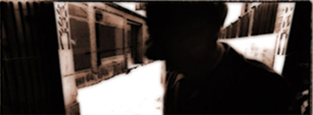Between the Bowl and the Wall
On account of the Reformation Jubilee 2017
Between the Bowl and the Wall
A site-specific installation for various church rooms
The installation
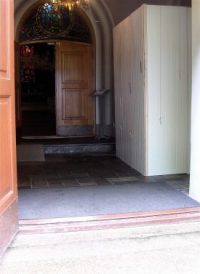
The work initially seeks to illustrate the reformation as a construction site. It’s a place for restoration; for re-thinking, re-analyzing and re-shaping, and it seems to be an ongoing indefinite process. From a distance, entering the church, it looks like any ordinary recurring church maintenance, where the two-part wooden wall (H: 2,4m, W: 1,8m, D: 1,3m) seems to conceal a part of the church wall and floor, where presumably some form of restoration is in progress. On one of the gables, there’s an opening behind a curtain. The installation could hereby also give rise to ideas that it might conceal a catholic confessional. Through an activation (a one-to-one-performance) of the space, a possible connection between the installation and confession as a practice is created in the ongoing process during the exhibition. The work is an attempt to bring forth a restored version of one of the major conditions for a fortunate reformation, namely the conversation. This is explained and displayed as an eternal process; a conversation is hard to freeze into a form or a statement, it’s rather something that continues, something that happens.
Thus, our work is a reminder that the reformation should be regarded as an ongoing process and not solely something that happened in the past. The installation’s title is a translation of an old Swedish saying – mellan skål och vägg – which refers to that certain confidential conversations were held on a bench or two stools placed against a wall where you and your conversation partner sat next to each other with a drinking bowl each, enclosing yourself and thereby excluding the rest of the room.
The Sound Installation
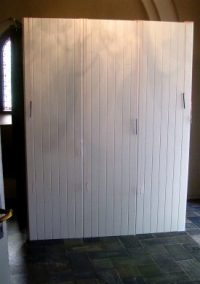 The electronic composition – as being a part of the installation – will continuously run during opening hours, via one iPod on repeat and two active speakers placed within the installation. The sounding material will consist of two juxtaposed sound files:
The electronic composition – as being a part of the installation – will continuously run during opening hours, via one iPod on repeat and two active speakers placed within the installation. The sounding material will consist of two juxtaposed sound files:
- Field recordings from Stadtkirche – the church in Wittenberg were it’s told that Martin Luther held more than 2000 preaches within 5 years. The recordings from May 2017 contains sounds of people carefully moving around in the distance, i.e. walking, talking, sneezing, coughing, etcetera.
- Recordings of various chorals composed by Luther; fragments chosen, edited, filtered and sneaked in behind the field recording as voices coming from a distant part of the church or the history.
The Performance
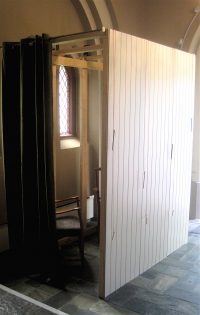 During the time for the exhibition, we have invited the actual serving priests or imams from the local surroundings. During 60 – 90 minutes per day, (this is a estimation that has to be adjusted according to the their own schedule and what would be conceivable regarding other parameters), the varying religious representatives walks in and takes a seat. Here he or she has been requested to read and study the theses of Luther. The visitors are now able to choose whether they would like to enter the installation – the one-to-one performance – and have a conversation about the thoughts and theses of Luther.
During the time for the exhibition, we have invited the actual serving priests or imams from the local surroundings. During 60 – 90 minutes per day, (this is a estimation that has to be adjusted according to the their own schedule and what would be conceivable regarding other parameters), the varying religious representatives walks in and takes a seat. Here he or she has been requested to read and study the theses of Luther. The visitors are now able to choose whether they would like to enter the installation – the one-to-one performance – and have a conversation about the thoughts and theses of Luther.
Considering the fact that the visitors more than likely will be locals, talking to a local priest or imam, and then eventually about locally connected problems and solutions, the installation will naturally develop a clear site-specific character. The aggregated installation will hereby be both the cause to, and the result of, an activated church, considering its relationship to the heritage of Luther.
Review
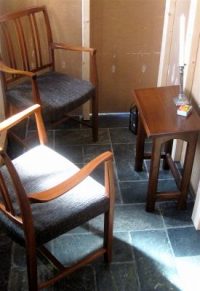 ”I Sarpsborg kirke kan du i våpenhuset gå inn i et rom på størrelse med en skriftestol. Der inviteres du til å samtale med en prest eller imam, eller du utfordres til å gjøre deg egne tanker. Kunstnerne Stefan Thorsson og Liv Kristin Holmberg tar utgangspunkt i Luthers rom i borgen i Wittenberg og har laget et rom der en likestilt dialog kan finne sted mellom prester og lekmenn.
”I Sarpsborg kirke kan du i våpenhuset gå inn i et rom på størrelse med en skriftestol. Der inviteres du til å samtale med en prest eller imam, eller du utfordres til å gjøre deg egne tanker. Kunstnerne Stefan Thorsson og Liv Kristin Holmberg tar utgangspunkt i Luthers rom i borgen i Wittenberg og har laget et rom der en likestilt dialog kan finne sted mellom prester og lekmenn.
Prost Kari Mangrud Alvsvåg i Sarpsborg er en av de du kan snakke med der. Onsdag deltok hun i en samtale mellom kunstnere, imam og prest ved åpningen av utstillingen. Hun ser også rommet som uttrykk for savnet av et rom der man kan erkjenne sin synd og åpenhjertig snakke om det man har gjort galt. –Her kan vi også snakke om de tanker man har hvordan kirken kan fornyes i dag, sier Alvsvåg.”
Arne Guttormsen, Vårt Land, 16.06.17
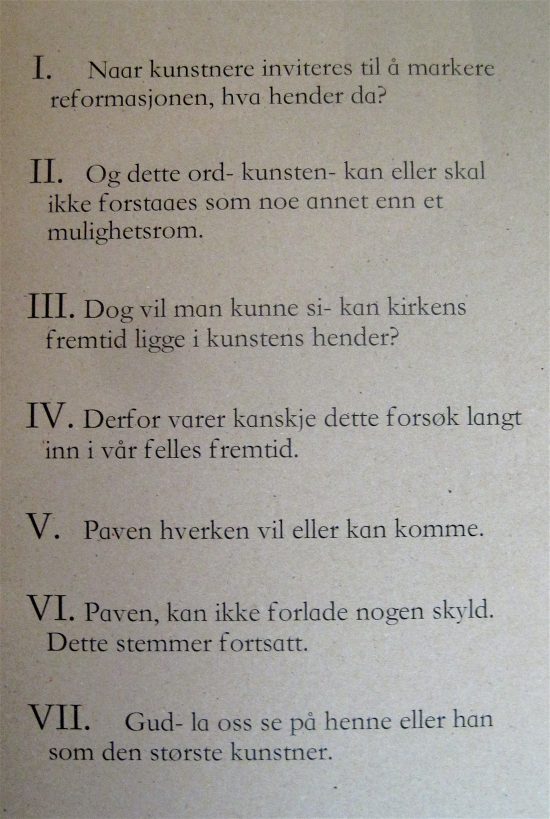
Link
Reformation Jubilee 2017 – The Exhibition

